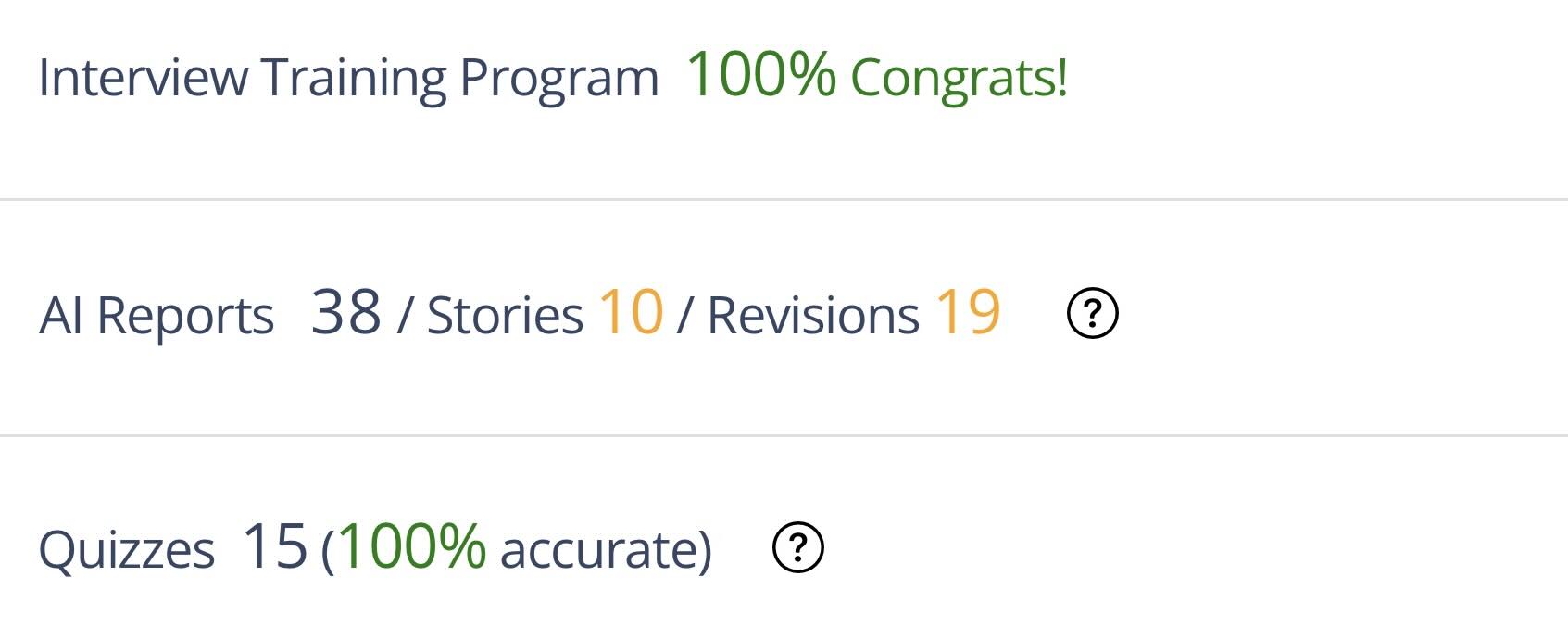Amazon Behavioral Interview
Pass your Amazon interview using tried-and-tested methods. This content is biased towards benefiting the candidate, on what connects with success in job interviews, while saving you time from what doesn’t.

Videos
Easy to follow advice on how to best answer any non-technical interview question.
Stories Dashboard
95% of candidates fail building a proper story bank (by their own standards).
- Add, revise, rank & label your stories - using both quantitative & qualitative indicators (e.g. revisions to stories ratio)
- Comprehensive feedback on your answers with over a dozen types of reports from ChatGPT, Vertex & Cohere
- Best practices and guidance at every step
Assessments
Each module includes short knowledge-check assessments plus longer, skill-building evaluations.
- Practice identifying core behaviors in unfamiliar contexts
- Interviewing tips and tricks
- Mistakes to avoid
Training 2: Amazon Onsite Training Program
In its first version this was over 9 hours; to save you time, I compressed it to 6h30, in 43 sections. This is best consumed over the course of a few consecutive days.
My goal is to help you to improve your STAR answers using your best stories, in a 4 step process:
- Section one: reasoning by analogy will help you to quickly and accurately find relevant stories for each principle.
- Section two: general types of questions; outcome: your elevator pitch.
- In section three, I'm using the examples from section one, in order to highlight behaviors to use and to avoid in your own answers.
- Section four - more exercises to further improve the quality of your stories. Outcome: your stories, ready for the interview.
I perfectioned this method throughout the years, while helping & learning from some really smart people.
First, throughout my career, I've worked in both technical and non-technical roles.
Second. My experience coaching people for all major job categories has taught me an important lesson: anyone applying for such jobs should be able to qualify if an answer, including its depth, is for them. Some stories will be for mid-level roles while others will be for L7+ roles, while others will be for sales.
While it is true that many of these stories are from IT, I picked examples from a variety of industries.
from a candidate in Seattle - under Invent and Simplify
A side project of mine is to track potholes in the area by designing a reporting system using cameras mounted on garbage trucks; they would scan the road and using AI would find holes in the road, which would be reported to the city for review.